Beekeeping economics
You are not going to make a million being a beekeeper. Or even a fraction of that.
I know a couple of beekeepers who have all the trappings of wealth … the big house, the big car with the personal number plate, the holiday place in France and the beesuit with no smoker-induced holes in the veil.
Neither of them made their money beekeeping.

Anyone aboard Murray?
I’ve met a few of the large commercial beekeepers here and abroad, operations with 500 to 1000 times the number of hives I’ve got.
None of them seemed to have yachts or Ferraris.
Or any free time to enjoy them if they had 😉
If you want to have a lot of money when you finally lose your last hive tool you probably need to start with lots more {{1}}.
But the vast majority of beekeepers aren’t commercial. Most are hobbyists.
A hobby that (sometimes) makes a profit
In the UK there are ~25,000 beekeepers. Of these, the Bee Farmers Association represent the interests of the ~400 commercial beekeeping businesses.
Over 98% of UK beekeepers therefore do not consider themselves as commercial. These amateur or hobby beekeepers have on average 3-5 hives each, according to relatively recent surveys. Most probably have just one or two, with a few having more {{2}}.
It’s worth emphasising (again) that it is always better to have more than one colony. The small increase in work involved – the apiary visits, the inspections, extracting all that honey 😉 – is more than justified by the experience and resilience it brings to your beekeeping.
For the remainder of the post I’m going to consider a (hypothetical) beekeeper with four colonies.
What are the costs involved in running four colonies and how much ‘profit’ might be expected?
Inevitably, this is going to be very, very approximate.
I’m going to make a load of assumptions, some loosely based on real data. I’ll discuss some of the more important assumptions where appropriate.
I’m also going to ignore a load of variables that would be little more than guesstimates anyway e.g. petrol costs to get to your apiary {{3}}, the purchase of additional hive hardware or rent for the apiary.
Why four hives?
I’ve chosen four hives for a number of reasons.
Firstly, it’s a small enough number you could house them in a small(ish) suburban garden and, wherever they’re sited, they will not exploit all the forage in range.
Secondly, it’s a manageable number for one beekeeper with a full time job and lots of other commitments. However, it’s not so many you have to buy an electric extractor or build a honey-processing room {{4}}.
Finally, some expenses are for items sold in multiples e.g. frames or miticides, and it saves me having to slice’n’dice every outgoing cost too much.
This hypothetical four hive beekeeper also, very sensibly, belongs to her local association. She therefore has access to the shared equipment (e.g. a honey extractor) that the association owns.
The costs of starting beekeeping
I’ve covered this before and will just summarise it here.
I reckon the minimum outlay is a bit less than £500. This covers the purchase of two hives (Thorne’s Bees on a Budget @ £160 for a complete hive, two supers, frames, foundation etc.), a good quality beesuit (perhaps another £100) together with the peripheral, but nevertheless essential, smoker, hive tool and gloves. It does not cover the cost of bees.
Two hives really should be considered the minimum. Even if you only start with one colony, swarm control or colony splits in your second year will necessitate the purchase of a second hive.
So, for the purpose of these back of an envelope calculations I’ll assume our hypothetical beekeeper has already spent about £1000 on starting up and then doubling up the numbers of hives.
Cedar or polystyrene hives should last more than 25 years. I’m not going to work out the depreciation on this initial outlay {{5}}.
So, let’s get back on track.
In an average year, what is the expenditure and potential income from these four hives.
Expenditure
The outgoing costs are associated with maintaining a good environment for the bees, minimising disease and ensuring they have sufficient food for the winter (or during a nectar dearth).
The first annual expense is the replacement of ~30% of the brood comb every season. This is necessary to reduce the pathogen load in the hive and to replace the old, black comb with fresh new comb.
Frames and the foundation to go in them are generally bought in 10’s or 50’s. With four hives (assuming Nationals) that means you need a fraction over 13 new frames a season. First quality frames bought in 10’s, together with premium quality foundation {{6}}, work out at £2.99 each i.e. ~£40 for the year.
To control mites you need to use miticides {{7}}. For the purpose of this exercise we’ll assume our beekeeper chooses to use Apivar in the autumn. This costs £31 for 5 hive treatments {{8}} and is required once per year. In midwinter our beekeeper wisely chooses to use an oxalic acid trickle as well, knowing that – while the colony is broodless – the mites are easier to slay. £13 buys you a ten-hive (35 g) pack of Api-Bioxal {{9}} which has a shelf-life of more than a year, so for one year the expense is £6.50 (which for convenience I’ve rounded up to £7).
Food is essentially sugar in some form or another. A single colony needs 10-20 kg of stores for the winter (depending – very much – upon the strain of bee, the harshness of the winter etc.). You therefore need to feed about 12.5 litres of heavy syrup (2:1 by weight, sugar to water) which weighs about 16kg (and finally generates ~14 kg of stores) and contains about 10 kg of sugar. Tesco sell granulated sugar for 64p per kilogram. So, for four colonies, our beekeeper needs to purchase ~£26 of granulated sugar.
Remember two of those figures in particular – 14 kg of stores and the 10 kg of sugar that needs to be purchased to make them {{10}}.
Expenditure totals
In total, four hives are likely to cost about £104 to maintain per year.
Yes, I know I’ve omitted all sorts of things such as stimulative feeding in the spring, replacement super frames and hive tools. I’ve not costed in the honey buckets or any number of other ‘odds and sods’ like replacement Posca pens for queen marking. Let’s keep this simple 🙂
The essentials work out at a little over £25 per hive.
But wait … there is something I’ve omitted.
Not expenditure per se, but losses that have to be made good to ensure that our beekeeper still has 4 colonies in subsequent seasons.
These are the ‘losses’ due to colonies dying overwinter or during the season. I think these should be included because they are the reality for most beekeepers. On average ~20-25% of colonies are lost each season. Not by everyone (which I’ll cover in a follow-up article on economies in beekeeping) of course, but winter losses are so common for most beekeepers that they need to be factored in – either by making increase or by avoiding losing them in the first place.
Enough on these hidden costs, what about the the income?
Products of the hive
Bees, as well as providing critical ecosystem services (pollination) and being fascinating animals, also produce very valuable products.
The best known and most obvious product is of course honey. However, the products of the hive also includes wax, propolis and Royal Jelly.
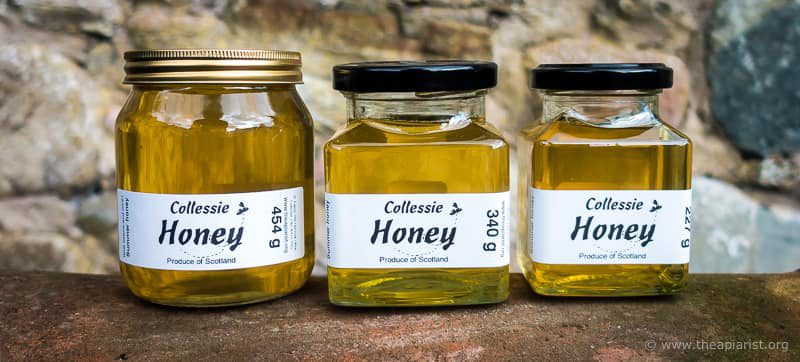
Local honey
I’m going to ignore everything but the honey. Royal Jelly and propolis are too specialised for the sort of ‘average beekeeper’ we’re considering and four hives produce relatively small amounts of wax each year.
There’s an additional product of the hive … bees. Don’t forget these as they can be the most valuable product made in any quantity.
You can sell complete hives, small nucleus colonies (nucs) and mated queen bees {{11}}. For convenience I’m going to assume the only ‘live’ product of the hive our beekeeper might sell is a five frame nuc if they have one spare. What’s more, I’m going to assume that our beekeeper either recoups the cost of the box or has it returned (but pays £15 for the frames and foundation in the nuc).
So, how much honey and how many bees?
Income from honey
The average honey yield in 2018 in the UK was ~31 lb per hive.
2018 was a very good season.
The annual BBKA survey of 2017 showed the average that year was ~24 lb per hive.
Yields vary year by year and according to where you keep bees. The 2010 figure was ~31 lb, 2012 was a measly 8 lb per hive and 2014 was ~31 lb. I can’t find a record of the 2016 figure (but haven’t looked too hard).
Yields are higher in the south and lower in the north.
I’m going to err on the slightly generous side and assume that the honey yield per hive is 25 lb and that our hypothetical beekeeper therefore generates 100 lb of honey per year.
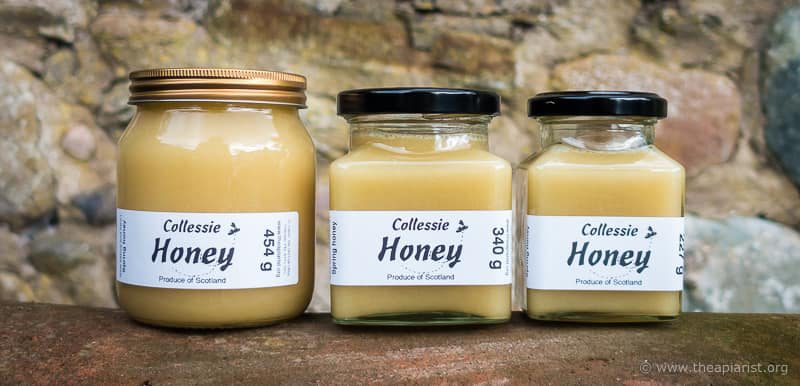
More local honey
As we saw last week, honey prices vary considerably across the country. For the purposes of these calculations we can use the BBKA survey which showed that ~56% of beekeepers sold honey at an average price of £5.49 per lb (cf. £5.67 in 2017).
And here’s the first dilemma … did the 44% of beekeepers who did not sell honey not have any honey to sell?
How does this affect the average per hive?
Or did they simply give everything away?
Or just eat it themselves 😉
The annual BBKA surveys are not ideal datasets to base these calculations on. They are voluntary and self-selecting. Perhaps the 23,000 beekeepers who did not complete the survey {{12}} produced 150 lb per colony.
No, I don’t think so either.
I’m going to make the assumption that the average yield per hive was 25 lb and that our beekeeper chooses to sell her honey at an average price of £5.50.
So the gross income from honey is £550 {{13}}.
However, selling this honey requires packaging – jars, labels etc. Like everything else, costs vary, but 12 oz hexagonal honey jars plus lids from C Wynne Jones cost ~39p each, with a standard custom label and a plain anti-tamper label adding a further 10p per jar. Therefore to sell that 100 lb of honey our beekeeper will have an outlay of £63, reducing the net income to £487.
Income from bees
A strong hive in a good year should be able to produce both bees and honey. With good beekeeping, good forage and good weather it is possible to generate a super or two of honey and a nuc colony for sale or to make increase.
However, you can’t produce large amounts of both from a single hive … it’s an either or situation if you want to maximise your production of honey or nucs.
I’m not aware of any good statistics on nuc production by amateur beekeepers (or even poor statistics). My assumption – justified below – is that the majority of beekeepers produce few, if any, surplus nucs.
Why do I think that?
Firstly, nuc and package imports from overseas are very high. Demand is enormous and is clearly not met by local supply {{14}}. Secondly, winter losses (25%, discussed above) need to be made good. I presume that this is what many/most nucs are used for.
If they’re produced at all.
There are some major gaps in the available information meaning that the next bit is a guesstimate with a capital G.
For the purpose of this exercise I’m going to assume that our hypothetical beekeeper produces one nuc per year that it is used to compensate for overwintering losses, thereby keeping colony numbers stable.
In addition, she generates one surplus nuc every four years for sale.
I’ve chosen four years as it’s approximately every four years that there is a ‘good bee season’ giving high yields of honey and the opportunity for good queen mating and surplus nuc production.
This surplus nuc is sold locally for £175 which, after subtraction of £15 for the frames, leaves an annual profit from bees of £40 (£160 every 4 years).
Income totals and overall ‘profit’
That was all a bit turgid wasn’t it?
Here are the final figures. Remember, this is for a four hive apiary, per annum (4 year average).
| Item | Expenditure (£) | Income (£) |
| Frames and foundation | 40.00 | |
| Miticides | 38.00 | |
| Food | 26.00 | |
| Honey (jars/labelling) and gross | 63.00 | 550.00 |
| Nucleus colony | 15.00 | 40.00 |
| Sub totals | 182.00 | 590.00 |
| Profit | 408.00 |
Experienced beekeepers reading this far {{15}} will appreciate some of the assumptions that have been made. There are many.
They’ll also probably disagree with half of the figures quoted, considering them too high.
And with the other half, considering them too low.
They’ll certainly consider the average ‘profit’ per hive per year is underestimated.
But remember, our hypothetical beekeeper is based upon the average productivity and number of hives reported in the BBKA annual surveys.
As you will probably realise, a limited amount of travel to and from the apiary, or to shops/markets to sell honey, very quickly eats into the rather measly £102 “profit” per hive.
Observations
I think there are two key things worth noting immediately:
- Miticide treatments cost ~£7.50 per hive per annum. Even at the rather derisory £5.50/lb honey price quoted, this is still less than one and a half jars of honey. It is false economy to not treat colonies for Varroa infestation. If you compare the cost of the treatment vs. the ‘value’ of a replacement nuc to make up losses (£175) it further emphasises how unwise it is to ignore the mites.
- Some beekeepers leave a super or two at the end of the season ‘for the bees’. This is also false economy if you want to have any profit. The ~14 kg of stores (honey) needed will be replaced with a heavy syrup feed containing 10 kg of granulated sugar. At £5.50 per pound this honey could be sold for ~£170 {{16}}. The granulated sugar costs about £6.40. Do the maths, as they say. There is no compelling (or even vaguely convincing) evidence that bees overwinter more successfully on honey rather than after a granulated sugar feed. None {{17}}.
Summary
This article highlights some of the major expenses involved in beekeeping. Where possible I’ve based the figures on a hypothetical ‘average’ beekeeper with an average number of hives.
I’ve assumed that all outgoing costs were at list price from large suppliers (and excluded shipping costs).
I’ve left out the almost invaluable pleasure you get from working with the bees to produce lovely delicious local honey (or wax, or propolis, or bees or queens).
Do not underestimate this 🙂 Many – and I’m one – would keep some bees simply for this pleasure and the odd jar of honey.
No one is going to get rich quickly on £100 per hive per year {{18}}. However, the purpose of this post was to provide a framework to consider where potential cost savings can be made. In addition, it will allow me to emphasise the benefits, to the bees and the beekeeper (and potentially her bank balance), of strong, healthy, highly productive colonies rather than the ‘average’ 25% colony losses per autumn with less than a full super per hive honey … which is then sold for less than it’s worth.
But that’s for another time …
Colophon
Beekeeping economics as in “The management of private or domestic finances; (also) financial position.” which is distinct from economy in beekeeping (which I will cover in a later post) meaning “The careful management of resources; sparingness”.
{{1}}: Money … and hive tools.
{{2}}: I am one of the latter, with about 20 colonies for work and pleasure going into the winter of 2019.
{{3}}: Which might be £0 if the bees are at the bottom of the garden, or quite a bit more if you use your Bentley Bentayga (<20mpg) to travel across the county.
{{4}}: But it’s a slippery slope!
{{5}}: If I could I’d be an accountant and wouldn’t need to be concerned about the profit or loss of my beekeeping … ;-)
{{6}}: Where possible, all prices are from the current EH Thorne’s price list.
{{7}}: Yes, good beekeeping strategies can help reduce mites as can bees with reduced susceptibility to mite infestation or the viruses they transmit. However, we’re making some assumptions here … not least that the beekeeper is not so hugely experienced or naturally talented that the mites just fall off of their own accord. Or that our hypothetical beekeeper has miraculously selected a strain of highly mite-resistant bees. We’re talking about average bees and average beekeeping here.
{{8}}: Conveniently, as the ‘spare’ can be used to treat either captured swarms or a nucleus colony.
{{9}}: Actually slightly more, as the dose recommended is too high.
{{10}}: And, just to reiterate, the amount of stores needed depends upon the strain of bee and the severity and length of the winter. Whether it’s 14 kg for your bees, or 24 kg, you’ll need need ~70% of that weight in granulated sugar to prepare the heavy syrup for autumn feeding.
{{11}}: Another oversimplification – look around and you will find you’re able to buy packages (a colony but no hardware), unmated queens and even queen cells (talk about ‘taking a punt!’).
{{12}}: Survey response numbers are ~700-1400 per year.
{{13}}: Note added as this nears publication (but I have no more time to write) … I’d bet that 25 lb is a significant overestimate of honey available for sale. Lots of us get pleasure in giving away honey to friends and relatives, and they certainly enjoy receiving it. I wouldn’t be at all surprised if 50% of honey produced by small-scale 2-4 hive beekeepers is given away, so reducing any potential profit significantly. It certainly was when I had only a couple of hives.
{{14}}: I’ve already seen 2020 nuc prices advertised at a – frankly daft – £290. If there was ample supply these prices would be much more reasonable.
{{15}}: Deserve a commendation.
{{16}}: And even then would be undervaluing the product.
{{17}}: Lots of ‘natural beekeepers’ will tell you differently but I’d challenge them to produce anything other than anecdotal evidence to support their belief. It’s simply wishful thinking that ‘unnatural beekeepers’ are not really caring for their stocks.
{{18}}: And don’t even think about working out how much below the annual minimum wage you’d be earning if you charged your time as well!

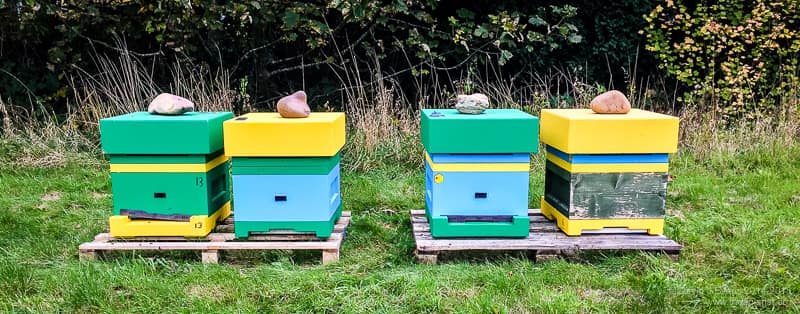

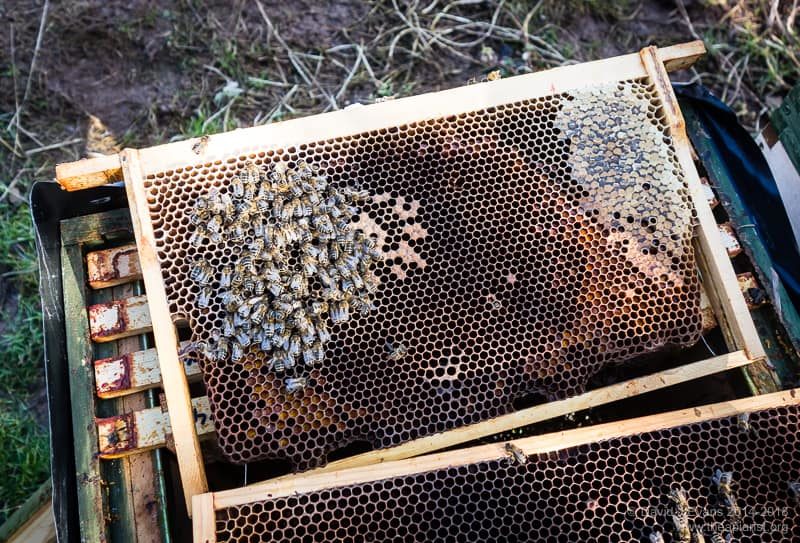
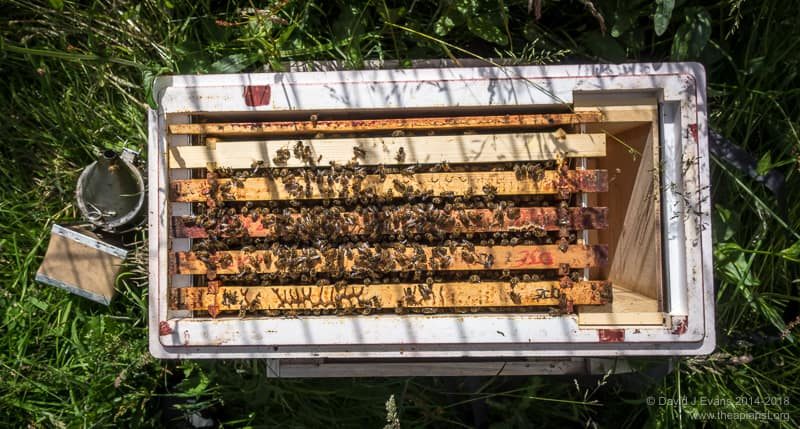
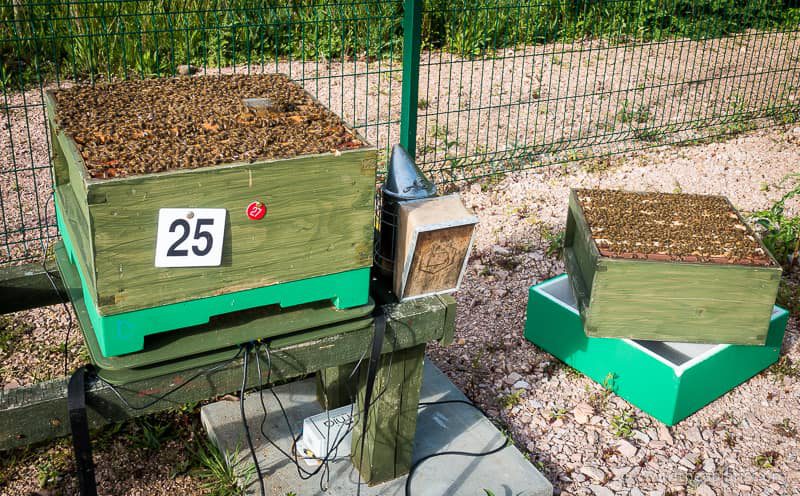
Join the discussion ...